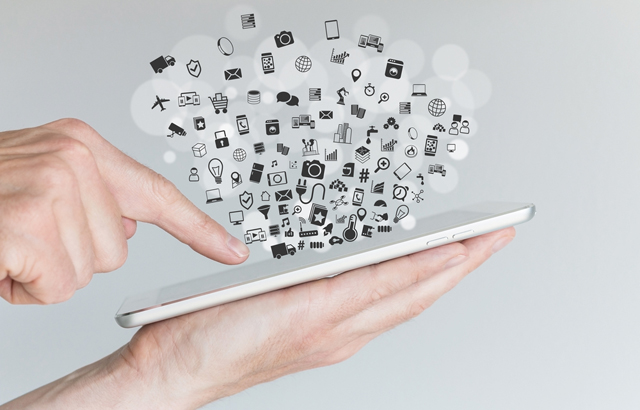Nearly half a century ago, history was made with the ‘successful’ transmission of data between two computers in California. The letters ‘lo’ were sent – it should have been the world ‘login’, but that’s a moot point – establishing the basis of what we today refer to as the internet.
Originally used by the military and universities to communicate, it wasn’t long before everyone could see the benefits of this network. By the late 1980s, governments, businesses and the general public were increasingly connecting their computers all across the world.
Over a decade later, at the turn of the 21st century, there were 400 million active internet users … 15 years later, that figure was an impressive 3.2 billion. It has and is transforming our lives in ways that seemed impossible 47 years ago and can be considered one of the pinnacles of human innovation.
However, it hasn’t been smooth sailing. While the internet has improved and grown exponentially over the years, so too have the threats. As the world celebrates International Internet Day, we take a look at how cybercriminal activity has evolved.
Cybercrime: A global threat to security
Criminals are always looking to exploit new opportunities, identifying gaps in security and loopholes. While this network of globally connected devices allows for so much good and opportunity, over recent years it has become the new home of crime.
"More and more criminals are exploiting the speed, convenience and anonymity of the internet to commit a diverse range of criminal activities that know no borders.
As the intergovernmental organization Interpol has stated: “Cybercrime is a fast-growing area of crime. More and more criminals are exploiting the speed, convenience and anonymity of the internet to commit a diverse range of criminal activities that know no borders, either physical or virtual, cause serious harm and pose very real threats to victims worldwide.”
Online threats weren’t always designed with crime in mind. In 1971, the first computer worm, the Creeper, was written. An experimental self-replicating program designed by computing enthusiasts, it wasn’t intended to be malicious (it deleted, for example, old versions of itself).
However, it nevertheless revealed inherent vulnerabilities in the internet, which could be exploited. Fast forward to today and now we’re seeing sophisticated and malicious threats being created and deployed on daily basis. While the intentions vary – can be monetary, political and/or ethically motivated, to name but a few – cyber intrusions as a whole have become more commonplace, challenging and dangerous.
How safe are you online?

With much of our lives revolving around the digital world and internet connectivity, we come face to face with risks every day. More so with the Internet of Things, which has, in effect, made it possible to connect anything and everything to the internet.
This has added a new dimension to cyberattacks. For example, in 2014, security research students from University of Central Florida proved just how easy it was to gain access to some of these devices – they demonstrated how, within 15 seconds, they could transform Google’s Nest thermostat “into a smart spy”.
Then there are the ‘usual’ risks that come with using your desktop, laptop or mobile device as you buy goods, update your status on social media or simply pay a bill. With the amazing improvements of internet banking allowing you to do the latter in under 30 seconds, so too is it now possible for someone from anywhere in the world to extract money from your bank account just as quickly.
The problem is that fraudsters’ behaviors are becoming almost identical to trusted users, making cybercrime an invisible threat, which we sometimes, inadvertently, contribute to.
Consider social media – many of us can and do give away masses of personal information without considering how this could be used to make us victims of crime. Risks include identity theft, usually achieved through sophisticated social engineering attacks (which, incidentally, are commonly used to propagate ransomware).
These are just a few fragmented examples. Other threats include sophisticated banking trojans, tech support scams and, troublingly, real world infrastructure attacks. Whether it’s at home, in the office or on the move, every internet user in the world has a variety of threats to contend with (whether they know it or not).
Fighting cyberthreats and online crime
Despite these many risks, the internet is changing lives for the better. It enhances our personal and professional lives and has become the backdrop to everything – from work to communication. However, with the number of online devices expected to reach 25 billion over the next five years, it’s time to prioritize information security and keep ourselves safe and secure online.
This is easier said than done. Here’s a case in point – while many of us worry about our online privacy, very few of us have taken steps to protect ourselves. On Facebook, for example, 92% of us worry about our online privacy but only 29% have updated privacy settings to protect personal information; while, against our better judgment, many of us continue to ‘protect’ accounts with exceptionally weak passwords.
Online safety requires us to be active in our own security. Whether that’s being more informed, investing in a reliable security solution, taking part in cybersecurity awareness training, backing up data and being able to spot telltale signs of something ‘phishy’, there are plenty of things we should be doing – and on a regular basis.
In short, a good security solution combined with good security practices can help ensure the internet achieves what it set out to do – to allow us to communicate and exchange information with anyone in the world, and to do so without fear. The possibilities of the internet have only just begun, after all …




